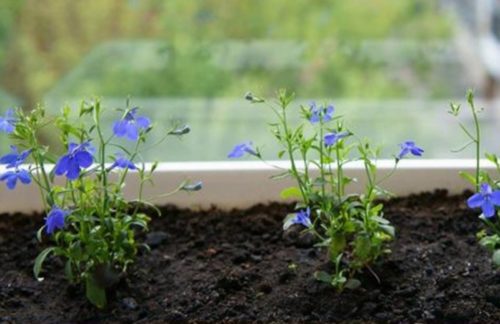Landing methods
Seeds
This planting method has more advantages than disadvantages. The most important of these is that this species is best suited for planting by seeds. Such a planting will give quick shoots, strong and disease-resistant sprouts.
The only drawback is that the seeds are very small, dusty and difficult to collect. In addition, they are difficult to sow - they must be evenly distributed on the surface of the planting container.
Therefore, for sowing, food containers with a lid are most often used. They help to achieve a greenhouse effect. This helps the seedlings to develop well, but there are also difficulties with further picking the shoots.
How to choose seeds?
It is important to collect seeds on time. The collection is carried out during the period when the flower has completely bloomed:
- Then 3-4 shoots are connected.
- Seeds from these shoots are knocked down on clean white paper.
For storing seeds, paper bags or glass containers are used.
For seed growing, you can choose ready-made granular seeds that are sold in flower shops. These seeds are usually planted in peat pellets or cassettes to bypass the picking process.
Sowing procedure
To facilitate the planting process, the seeds must be mixed with sand. The procedure is carried out in February or early March. Seed growing is carried out in a well-lit place.
Landing is done as follows:
- The planting capacity should be wide and shallow. It must have drainage holes in it. 5-6 cm of soil is poured into the container and the top layer is lightly tamped.
- Carry out the first watering of the soil with the addition of a fungicide for disinfection.
- Soak the soil for 10-12 hours.
- Seeds are evenly sown on the ground and do not fall asleep on top of the earth.
- The sowing is sprayed from a spray bottle with water with a weak solution of manganese.
- Cover the container with foil, put in a bright, warm place with a temperature of 18-20 degrees.
- Condensation must not be allowed to form. For this, daily airing of the sowing is carried out.
- After 2 weeks, sprouts appear.
- Water the sprouts only with a spray bottle or by adding water to the pan of the pot.
- After 2-3 leaves appear on the sprouts, make a pick.
- Saplings that have reached a height of 3 cm are pinched.
- After the establishment of warm spring weather, planting is carried out in the open ground.
- 5-6 seedlings are placed in one hole.
Cuttings
Propagation by cuttings is a simple, hassle-free procedure and is great for propagating this type of lobelia.
Like other planting methods, cuttings have their pros and cons.
The pluses include:
- the speed of the procedure;
- fast and painless rooting;
- preservation of varietal qualities of lobelia.
The downsides are:
- the content of the old bush throughout the winter period;
- strict adherence to the rules of care.
What cuttings are better to take and how to prepare them correctly?
For grafting, you need to choose a strong, adult shrub with healthy shoots without signs of disease or pests.
The size of the cutting should be at least 10 cm. They should be cut in the spring. Before planting, they are dipped in Kornevin for 40 minutes.
Landing is done in prepared soil. Planting procedure:
- Cut the cuttings and treat the slices with a growth promoter.
- Plant in special soil.
- Moisten the seedlings with warm clean water.
- Cover the seedlings with plastic wrap.
- Ventilate daily for 20 minutes.
- Rooting will take place in 3-4 weeks.
- Conduct regular abundant watering.
- Apply fertilizing with liquid complex fertilizers once a week.
- Transplant seedlings into open ground in 1-, 1.5 months.
Reproduction
There is nothing difficult about growing calibrachoa. This can be done in two ways: using seeds, and also by cuttings. Below is a step-by-step description of each method.
Stalk
This method includes the following steps:
- Soaking seeds in a special solution ("Zircon" or "Epin"). In this substance, the seeds must be kept for at least a day.
- Drying the seeds after soaking (on paper towels or on a thin cloth).
- Since the seeds are sown in peat tablets for seedlings, they must be prepared in advance. To do this, the tablets are soaked in boiling water and then cooled to room temperature.
- The prepared tablets are sown with seeds and placed under fluorescent lighting in special greenhouses. Plants should be illuminated for at least 16 hours a day.
The first shoots should appear about a week after sowing. They must be periodically ventilated by opening the greenhouse. And after a few days, generally remove the cover from the greenhouse.
To preserve the variety, the method of propagation by cuttings is used. It is no less laborious than growing plants from seeds.
To grow calibrachoa in the garden, you do not need to purchase seedlings from the market. Seedlings can be grown independently from seeds. This plant can also propagate by cuttings.
Getting seeds to germinate is not easy. Because of this, many gardeners use growth stimulants. The most common are Zircon and Epin. If the aforementioned drugs are not at hand, then you can use a weak solution of potassium permanganate.
Calibrachoa seed propagation
Calibrachoa is a beautiful flowering plant that needs good nutritious soil. Sand, peat and compost must be added to the soil, provided that the substrate is prepared independently. Store-bought potting mixes usually already have all the necessary ingredients for successful plant growth.
Calibrachoa landing
Even with the most successful sowing of seeds, not all are included. Therefore, when planting, the seeds need to be more densely distributed over the surface of the earth. The most acceptable scheme: for a square of soil 10x10 cm you need to take 50-70 seeds
Here are some tips to help your seeds grow in the best possible way:
- When growing seedlings, the soil should be regularly moistened. After sowing the seeds, a film is stretched onto the box and placed next to the window.
- After the seeds are planted, they should be sprayed up to three times a day. Watering is carried out with settled water at room temperature.
- About 4 times a month you need to make liquid top dressing. They must be applied to the soil by spraying.
- After about 3-4 leaves appear on the sprouts, they are transferred to the balcony with an open window.
- When a constant temperature of about 22 degrees is established outside, the flowers are planted in open ground.
Propagating a plant by cuttings is easier than growing from seeds. In this case, the crop will have the same qualities as the mother plant. This event is held at the end of the spring period or at the beginning of the summer season.
Calibrachoa propagation by cuttings
Plant propagation by cuttings is carried out in the following sequence:
- The upper, well-growing, healthy shoots on the mother plant are selected. They are cut off with a sharp knife.
- The handle should have 3-4 knots and at least 6 leaves, and its length should be about 7 cm.
- The leaves located at the bottom of the cutting are completely removed.
- In order for the root system of cuttings to develop as quickly as possible, they need to be placed in a container with a root former.
- As soon as the roots appear on the serench, they will need to be planted in a bowl with nutritious soil.
- After two months, the seedlings are planted in open ground.
The whole procedure for propagation by cuttings takes place in three main stages: this is the selection of suitable shoots, the removal of all excess from them and planting in the soil.
Features of growing from seeds
Such a beautiful plant can be grown from seeds. However, this process is quite difficult and long, because it requires not only planting, but also subsequent care after germination.
Soil preparation and sowing
First you need to purchase seeds, and then take care of the substrate. You can buy it at any flower shop, or you can make it yourself. To do this, mix 1 part of sand, 1 part of deciduous humus, 1 part of turf and expanded clay used for drainage. The soil must be prepared in advance, even in the fall, then it must be left in a room that is not heated so that it freezes. However, before sowing, it still needs to be calcined in the oven in order to disinfect.
Further, the substrate must be placed in containers, it is better that they are made of plastic, and then moisten well. After that, you can sow the seeds. Since they are quite small, in order to make the work a little easier, they can be mixed with sand.
You need to sow seeds either at the end of February or at the beginning of March. At the very bottom, you need to lay out a thin layer of drainage, and then the prepared soil. The layer should not exceed six centimeters. It is not necessary to sprinkle the seeds, it will only be enough to deepen them. After that, cover with glass or foil and put in a warm place. In this case, it is necessary that the temperature be within + 22-25 degrees.
Picking
Seedlings should appear within one week, however, it is not worth lifting the glass right away. This can be done only when they grow up to three centimeters. In addition, it is imperative to lower the temperature to +20 degrees. After one month, you can start diving the seedlings. This can be done with a small spatula, moreover, carefully enough so as not to damage the young stems.
It is best to dive seedlings into separate pots or peat cups. The next dive is done in late May or early June, directly into the open ground. There must be a distance of at least 20 centimeters between individual bushes. It is necessary to plant approximately six seedlings in a separate hole to make the bush more decorative. When the lobelia sprouts grow 3-4 centimeters, their tops must be pinned off immediately so that the bush will turn out to be more decorative in the future. In the future, this should be done every 2-3 weeks.
Lighting and hardening
When growing seedlings, it is necessary to provide them with good lighting so that later the seedlings do not stretch and become thin. Plants should be planted in places where there is partial shade and the sun's rays do not fall directly on them. In addition, it is necessary to temper them as much as possible. To do this, it is necessary to gradually reduce the temperature, and then take it out for a while to fresh air.
Gradually, the hardening time should be increased, up to the point when they can be left overnight. Only then will it be possible to plant the plants in open ground or hang them in flowerpots in the open air. However, one must remember that lobelias are afraid of drafts.
Watering
When caring for lobelia, it is very important to follow certain rules when watering. So, young seedlings should be watered only with a sprayer, always with a fine mesh
In addition, you should not be too zealous so that the ground is not too wet. Otherwise, a disease such as a fungus may appear, and all seedlings may die.
Watering must be carried out daily, in addition, it must be done twice, especially if there is no rain for a long time. It is best to use rainwater. However, you can also use plain tap water, but it must be defended. Watering is carried out very carefully, so that the roots are not exposed. After watering, be sure to loosen the ground.However, make sure that the soil does not turn into a "swamp", otherwise there may be a possibility of fungal diseases.
Top dressing
It is necessary to fertilize ampelous lobelia once a month, using special complex fertilizing for flowers. This will allow you to admire the lush bloom over a long period. However, you should not be too zealous with them. For example, if you get too carried away with nitrogen fertilizers, it can even stop the emergence of new flowers.
Types, varieties

About 20 types of lobelia are used as an ornamental plant, each of which has a distinctive shape and color of flowers, planting features. The most famous of them:
- Bird home. It is an ornamental shrub that grows up to 80 cm in height. It is used to create flower arrangements in multi-species plantings. During flowering, attractive spike-shaped inflorescences are formed, painted in a purple tint;
- Sessile lobelia. Decorative flowering form of the plant, capable of growing up to 70 cm in height. Prized for its attractive succulent leaves that grow straight from the stem. In autumn, they turn bright red and orange;
- Fiery lobelia (brilliant). It is a thermophilic plant, and depending on the variety, the height of the bush can vary from 75 to 150 cm. The leaves can be colored green or red. Spike-shaped inflorescences are formed in early summer, the petals are distinguished by a rich red hue;
- Lobelia is beautiful. Depending on the region, this species is grown both as a perennial and an annual crop. The bush reaches a height of up to 90 cm, during flowering it is covered with large inflorescences up to 3 cm in diameter. Flowers can be painted in a variety of shades and have a variety of shapes;
- Lobelia purple (cardinal). Shrub form, erect shoots reach 100 cm in height. This variety can be grown in close proximity to a reservoir or directly in the water. The inflorescences are spike-shaped, painted in a bright red hue;
- Lobelia Gherardi. It is a perennial shrub that grows up to 120 cm in height. Flowering continues throughout the season until autumn frosts. One of the most frost-resistant species, it can withstand frosts down to -29 ° C. Among the varieties, the most popular are plants with purple petals;
- Lobelia is blue. Among flower growers, this variety is better known under the name "syphilitic", since it was previously believed that the leaves were able to cure this dangerous disease. Outwardly, it is a branching bush that grows up to 100 cm in height. Very small flowers of blue or purple hue.
When choosing a variety, you need to pay attention not only to the photo on the packaging of the planting material, but the type of lobelia, since the peculiarities of cultivation and planting requirements depend on this.
Diseases and pests
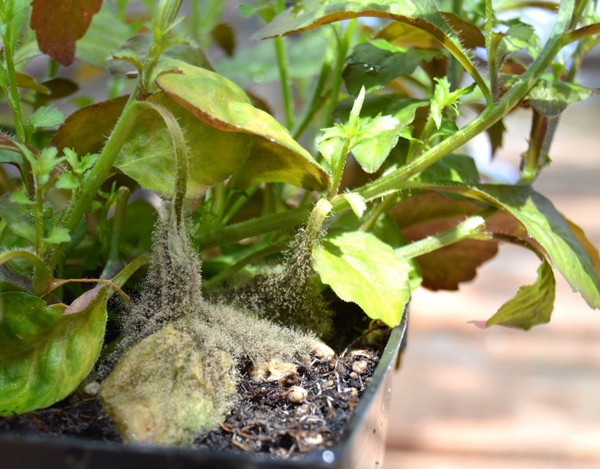 |
Bacterial wilting
Ways to fight:
|
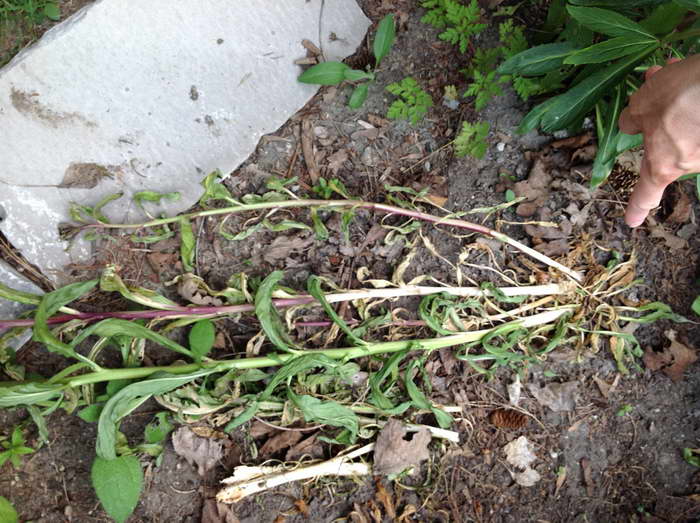 |
Stem rot Ways to fight:
|
 |
Thrips
Ways to fight:
|
Landing features
What is the best time of the year to start?
The optimal planting time is from the beginning of February to the end of March. During this period, the seeds are sown in planting containers and wait for the first shoots to appear. In May, when the threat of the first frost passes, and the seedlings grow and get stronger, they are transferred to open ground. These planting dates are recommended for the central part of Russia; in the southern regions, planting is carried out 10-14 days earlier.
Soil preparation
This species is undemanding to the ground.Feels good both on sandy, rocky soils and on loamy soils.
Fertilizers and top dressing should be applied to the substrate in small quantities, because excessive fertilization negatively affects the appearance of flowers and the brightness of the color of the petals. Loose soil is needed. There must be drainage holes in the seedling boxes to drain excess moisture. If possible, make an additional drainage layer.
Finished land can be purchased in specialized stores, supermarkets or at the market. Have you decided to make your own planting substrate? You will need to mix:
- garden land - 1 part;
- sand - one piece;
- peat - 1 chat;
- mineral fertilizers - half of the part.
Expanded clay is used as drainage. The soil is made in the fall so that it freezes in winter. And before sowing, they are disinfected by calcining in the oven.
If it is not possible to do this, then take 1-2 crystals of manganese, dissolve in boiling water and spill the substrate. Instead of soil, peat “tablets” are also used, which allow the seedlings to retain nutrients, moisture and develop more quickly.
Diseases and pests
Aubrieta is one of the few garden crops that have a very strong immune system and are able to independently cope with most of the fungal and viral diseases.
In rare cases, signs of powdery mildew, a fungal disease, which is expressed in the appearance of a white bloom on the shoots and flowers of the plant, which turns gray over time, can be noticeable on the aubretia. The disease not only worsens the appearance of the flower, but also reduces its immunity. Without timely treatment, the aubriet will fade and turn black.
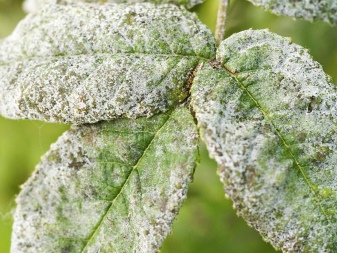
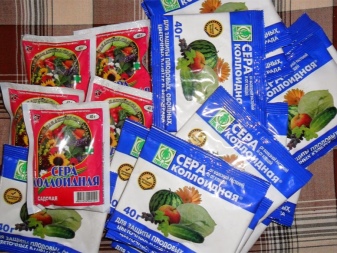
The most dangerous enemy for Aubriet is the common aphid. This pest is easy to recognize by the huge colonies that settle on the shoots and leaves of the plant. Additional signs are: an increase in the number of ants near the plant, the formation of a light and sticky bloom on the shoots, dark dusting on the leaves, shriveled flowers and shoots. Aphids not only weaken the shave and suck out all the juices from the leaves, but can also become a carrier of dangerous viral diseases.
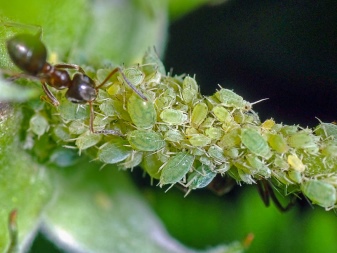
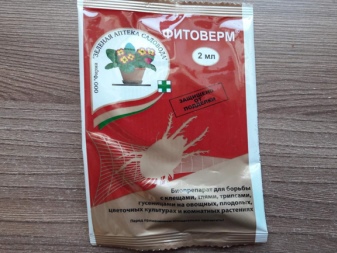
Another pest that can infect Aubrieta or weaken its immunity is the so-called cruciferous flea. A sign of the appearance of these pests is the numerous dark holes in the leaf plates of flowers. The larvae of this pest can be removed manually, in addition, it does not like water very much and does not take root in areas where calendula, garlic, marigolds or caraway are planted.

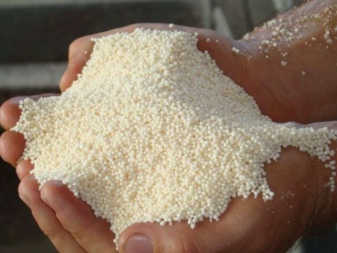
Other annual lobelias
Lobelia ampelous - a form specially bred for growing in hanging baskets. This hybrid has tough shoots, dense greenery and a surprisingly graceful and lush crown. During flowering, ampelous lobelias resemble blooming clouds.
Lobelia tenuior is an exquisite and slightly wild-looking plant that does not form such perfect bushes, but is charming in its own way. A slender plant about 30 cm high is decorated with blue, occasionally lilac two centimeter flowers. Ideal for landscape design.
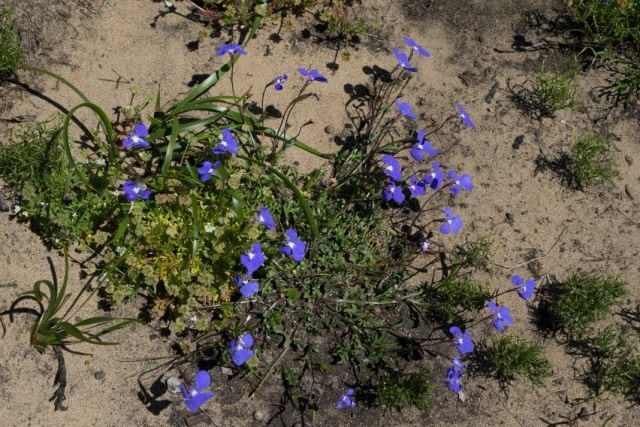 Lobelia tenuior. Mark brundrett
Lobelia tenuior. Mark brundrett
Strong Lobelia (Lobelia valida) is a short and rather rare species. Reaching a maximum of 40 cm, it looks like an erinus lobelia, however, with a less neat and perfect bush. The erect shoots and strikingly dense and luscious foliage of this African beauty are the perfect backdrop for large flowers. Blue and purple, they are adorned with a shiny white spot and appear to be almost twice the size of Erinus lobelia.
 Lobelia valida. Andrew massyn
Lobelia valida. Andrew massyn
Not quite annual Lobelia x speciosa is not like other annual lobelia. But this is because it is grown in several forms - seasonal and perennial.This is explained by the presence in the plant and individual varieties that require early sowing, not frost-resistant, and completely different, rather hardy forms. Beautiful lobelia blooms in August only when sown in March-April, and later planting does not allow you to enjoy flowering in regions with harsh winters. That is why it is better to grow this lobelia in the middle lane as a seedling summer plant, sowing seeds in January-February.
This is a magnificent and very lush plant up to 80-90 cm tall, with beautiful bright and dense foliage and candle-shaped inflorescences. They are lacy, translucent, and consist of bright pink and red large flowers of a bizarre shape with a "sponge". The best mixes are the pink-violet-red “Compliment” and ‘Fan Series Mixed’.
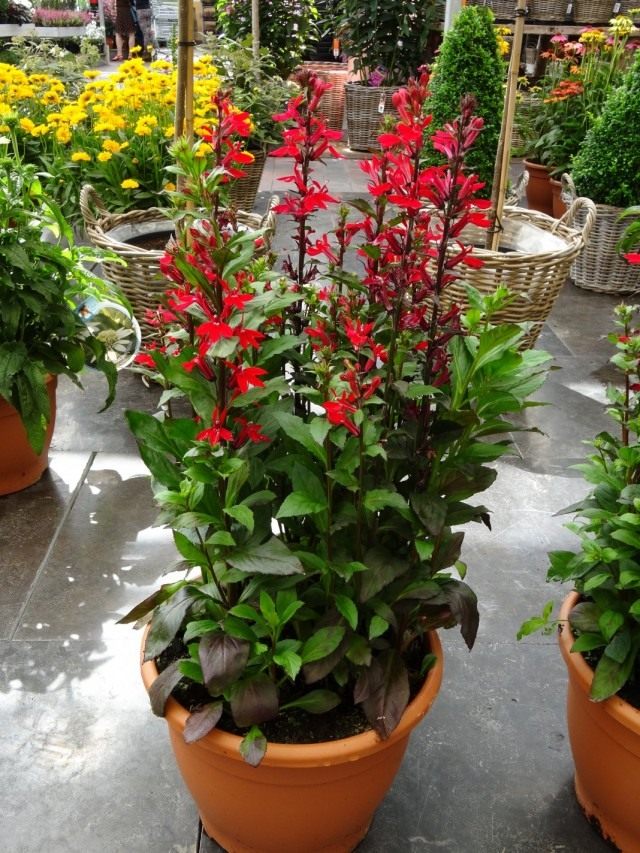 Lobelia fine (Lobelia x speciosa). growingcolors
Lobelia fine (Lobelia x speciosa). growingcolors
Lobelias are actively used in landscape design:
- for decorating flower beds from summer gardens;
- for filling voids and placing accents on flower beds and ridges;
- in ampels and stone flower girls;
- in borders and to decorate the edges of flower beds;
- in mixed container compositions and mini-flower beds;
- for decorating window and balcony boxes;
- as a ground cover.
What kind of care is needed
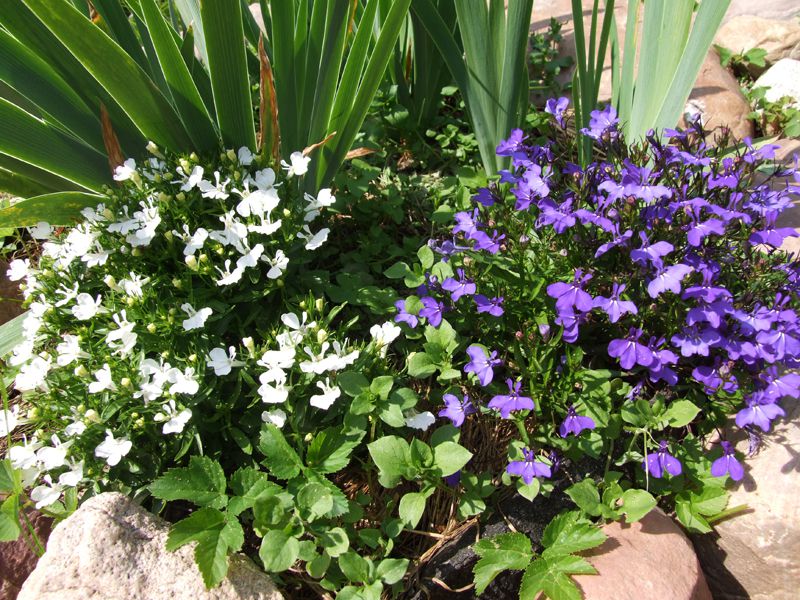
Flowers in containers and outdoors alike need proper care
Lobelia care throughout the season comes down to the following activities:
- watering (the ground should always be slightly damp, otherwise the lobelia will stop flowering);
- weed removal and mulching;
- the formation of a bush by pinching (the tops of the plant are removed as soon as it takes root in a flower bed or in a flowerpot);
- pruning (it is carried out after the "first wave" of flowering is completed, the faded branches are shortened to an average of 3-5 cm, so that soon they will be replaced by young shoots);
- top dressing (for plants in open ground - 2-3 times per summer, with mineral fertilizers containing nitrogen, calcium, phosphorus, lobelia does not perceive organic matter well, especially fresh).
Pests and diseases

Like many other flower cultures, lobelia has its enemies: slugs, fusarium, scale insects and other misfortunes.
Like any other plant, lobelia has enemies - pests, diseases. A flower grower, by the appearance of leaves and stems, the presence or absence of buds, must understand what kind of help his green pet needs.
Leaves covered with dark spots can be a sign of fusarium or powdery mildew, fungal diseases. This problem is solved as follows: diseased leaves are removed, the plant is treated with fungicides (for example, colloidal sulfur).
If the leaves turn red or purple, most likely this is a consequence of the temperature drop - the lobelia is practically healthy, no treatment is required. But to prevent this from happening (not every grower will like the changed "image" of his plants), do not rush to plant seedlings in the ground. It is this period that is fraught with great danger due to changes in night and day temperatures, and in spring, and even in the first days of summer, the contrast is especially noticeable.
When the leaves of a lobelia become sticky, this is an alarm: the plant has been attacked by a scale insect or mealy worm. Spraying with a solution of laundry soap can be an effective rescue measure.
Lobelia slugs are in serious trouble. A whole range of measures will work against them:
- traps in the form of wet pieces of cloth, plywood, which are placed in the garden at night, and in the morning they collect the "crop" of enemies;
- beer bait in the form of a small amount of beer poured into a glass (it must be buried in the ground);
- sharp fences made of nutshells, scrap metal, "encircling" plantings;
- chemical protection (mineral fertilizers have a deterrent effect on slugs, especially if they contain calcium);
- cleanliness on the site (if there is a lot of fallen leaves and various debris around, slugs have a place to hide).
Preparation for wintering
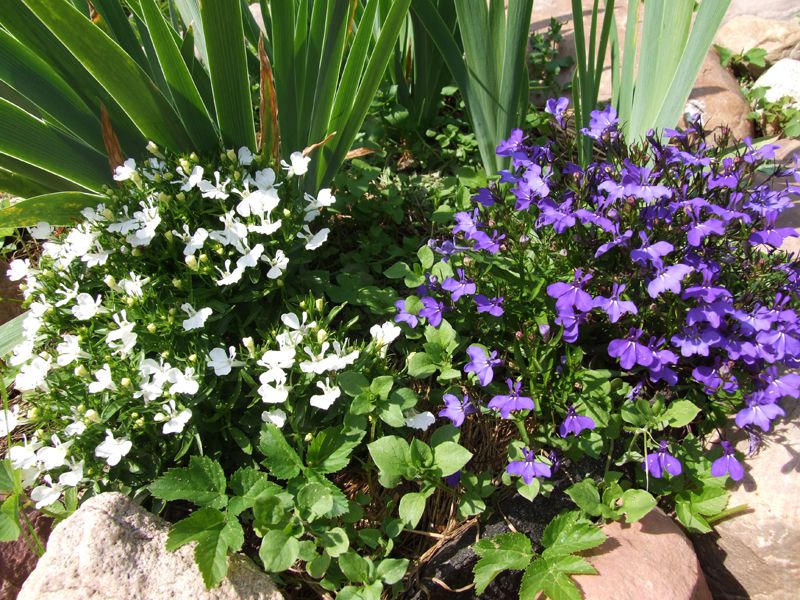
After autumn, perennial varieties must be prepared for cold weather.
Perennials will require proper preparation for winter. To do this, the lobelia is cut off almost completely, leaving "hemp" 2-3 cm high. They are covered with a thick (at least 20 cm) layer of fallen leaves or peat. Unfortunately, this measure will be effective only in those regions where there are no hard frosts in winter. If such a danger exists, then it is better to do this: dig up the lobelia in the fall and place it in a suitable box or pot. Bring it into the house and care for it like a houseplant. By the way, under the roof, it will continue to delight you with flowering throughout the winter. In the spring, lobelia will need to be cut in order to get a sufficient amount of planting material.
Lobelia is a wonderful decoration of a summer cottage or a balcony of a city apartment. The variety of varieties allows you to create original compositions that can delight you throughout the summer months with delicate flowers and luscious greenery. Without requiring any special effort from a person, this culture does not like to be forgotten - for example, it is left without watering for a long time or SOS signals are ignored when a flower gets sick or is attacked by pests.
Popular varieties
Ampel lobelias differ in the length of the shoots, the size of the leaves and flowers, and the color of the buds. Early flowering varieties are bred.
White:
- The Blue Splash regatta blooms with blue and white flowers. Differs in early flowering (almost a month earlier than other varieties). The plant branches strongly, because of this the bush looks voluminous;
- The White Cascade blooms in June and remains in bloom until September. Cold resistant. This lobelia is cascading white, the care and cultivation of which consists in abundant watering and timely feeding;
- Regatta White is distinguished by lush flowering, rapid growth.
Lobelia variety Regatta Marine Blue
Blue:
- The blue cascade grows to a height of 25 cm, the flowers are small (1 cm), but there are many of them. Flowering from mid-June. Withstands shade and cool summers;
- The Marine Blue Regatta has a rich, bright blue color. Spring-flowering variety.
Blue:
- lobelia ampelous regatta Sapphire. The color of the petals has a deep shade of blue, reminiscent of the gem of the same name. Early flowering plant;
- Sapphire blooms later than Regatta Sapphire, but it is distinguished by its resistance to cold. Light-loving variety;
- Lobelia Niagara ampelous is a dense bush. Shoots up to 40 cm in length. Flowering begins in June and ends in autumn. The leaves and flowers are small.
Red:
- ampelous lobelia Red cascade in warm regions is grown as a perennial. Corollas are colored pink and lilac;
- The marquise has a cascading shape with red flowers. Profusely blooming;
- Serpentine lives up to its name. Differs in multi-colored flowers, which can be purple, blue, blue, lilac, white.
Reproduction
Lobelia can be planted as seedlings or with seeds. You can also propagate the bush vegetatively.
Growing seeds for seedlings
To get seedlings that bloom earlier, seeds should be planted in February. Then you can see earlier flowering.
However, early planting requires illumination of seedlings with a phytolamp, since there is not enough natural light at this time of the year. If the seeds are planted in March, then flowering can be observed only at the beginning of summer.
Lobelia seeds are very small. When sowing into the soil, you must first mix them with sand, so that it is more convenient to distribute during planting. After planting, the seeds are not tamped, but watering is carried out by spraying so that they are not washed away.
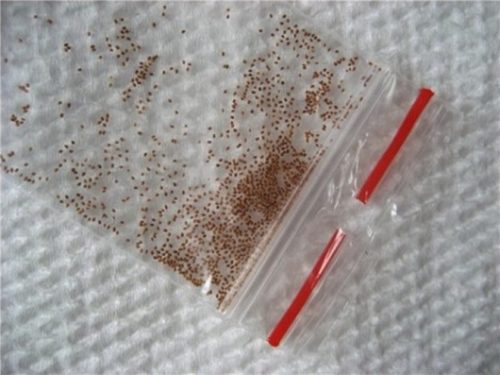
You can plant seeds for seedlings in specially prepared containers, the bottom of which is laid out with a drainage layer. Germination will be higher if the seeds are not sprinkled with soil.
After planting, greenhouse conditions are created by identifying containers in a well-lit place. Seedlings appear within a week.

You can also use special peat tablets. This method is less traumatic for seedlings. To plant such small seeds, a toothpick is usually used.
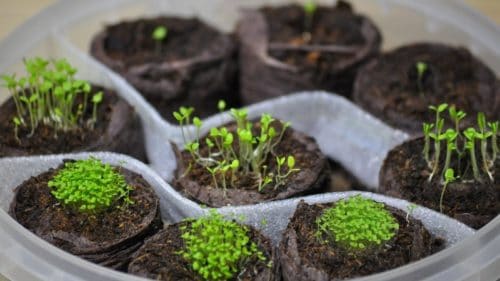
After the appearance of the first true leaves, the seedlings are picked in 3-4 pieces in prepared pots. The soil in pots is regularly moistened, preventing moisture stagnation, so as not to provoke the appearance of fungus.
Young seedlings need regular pinching to form a beautiful bush.

Propagation by cuttings and dividing the bush
For cuttings, the strongest shoots are chosen, breaking them out at the very base. Rooting is carried out in moist and loose soil.
Landing in the ground
Lobelia should be planted in flower beds only if there is no threat of night frosts. The place for the bush should be sunny, so you can see the most spectacular flowering. The flower can grow in partial shade, but the lack of sunlight affects the quality of flowering: the flowers become much smaller, and the stems become thinner.
The soil should not be too fertile, this prevents abundant flowering, all the strength will go to the leaves.
